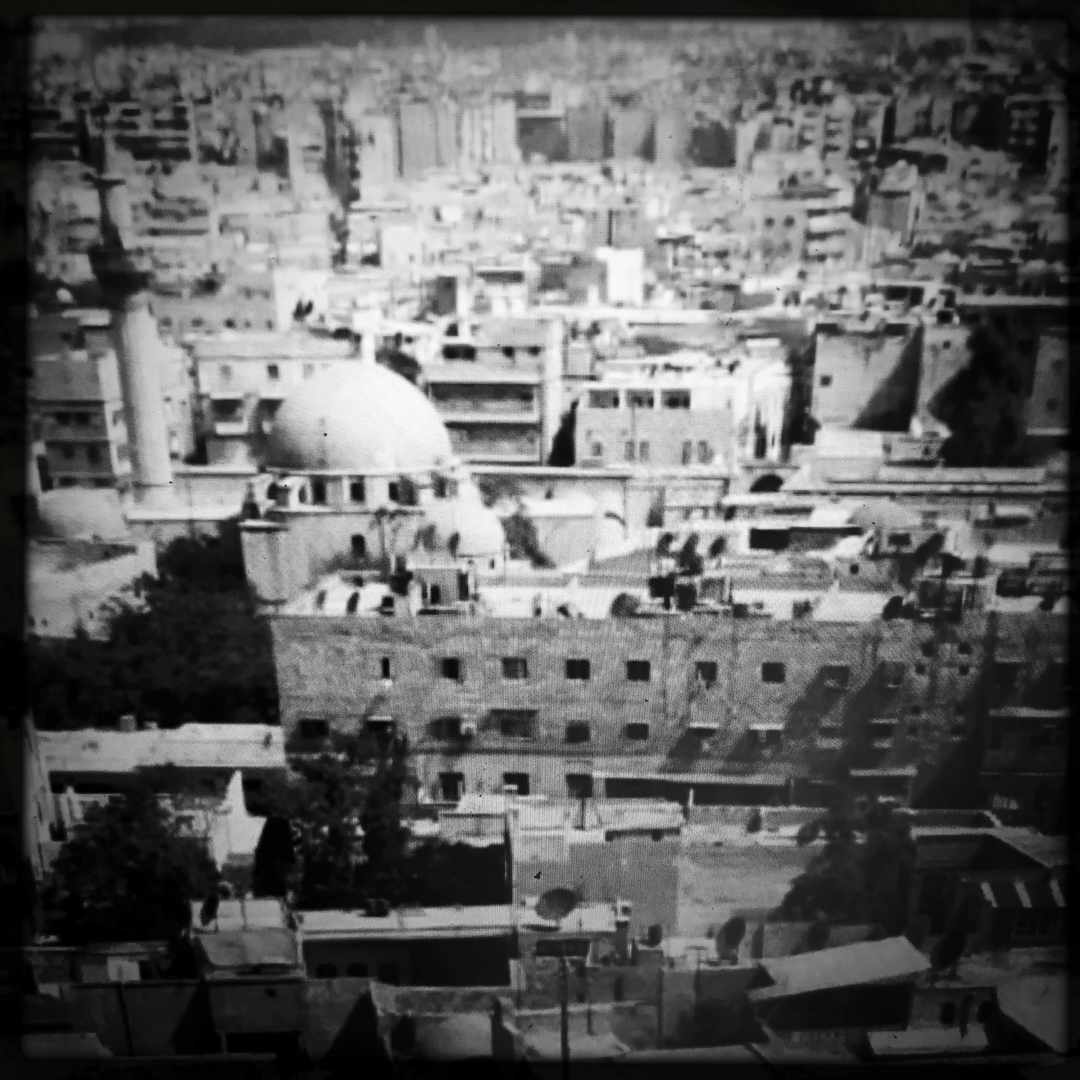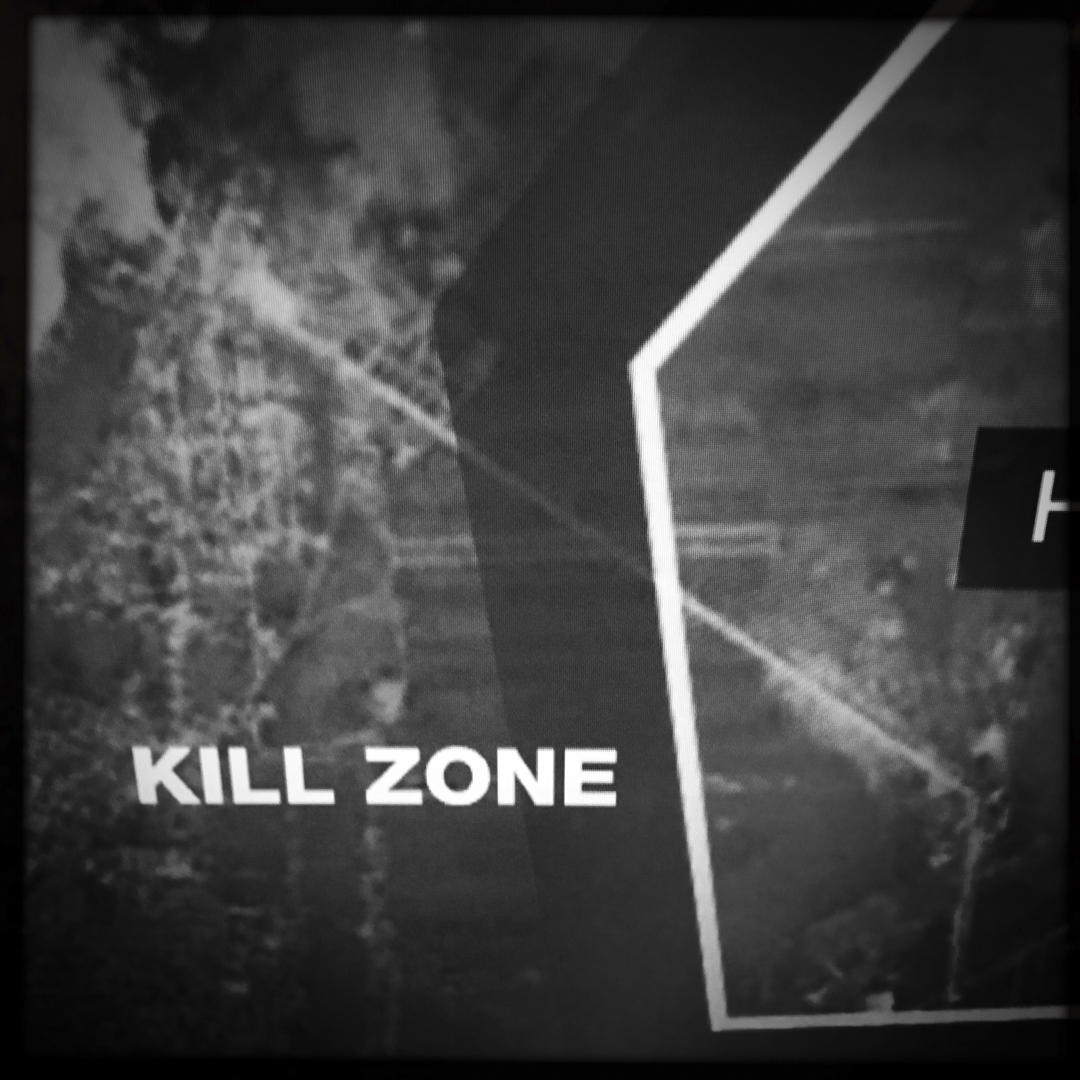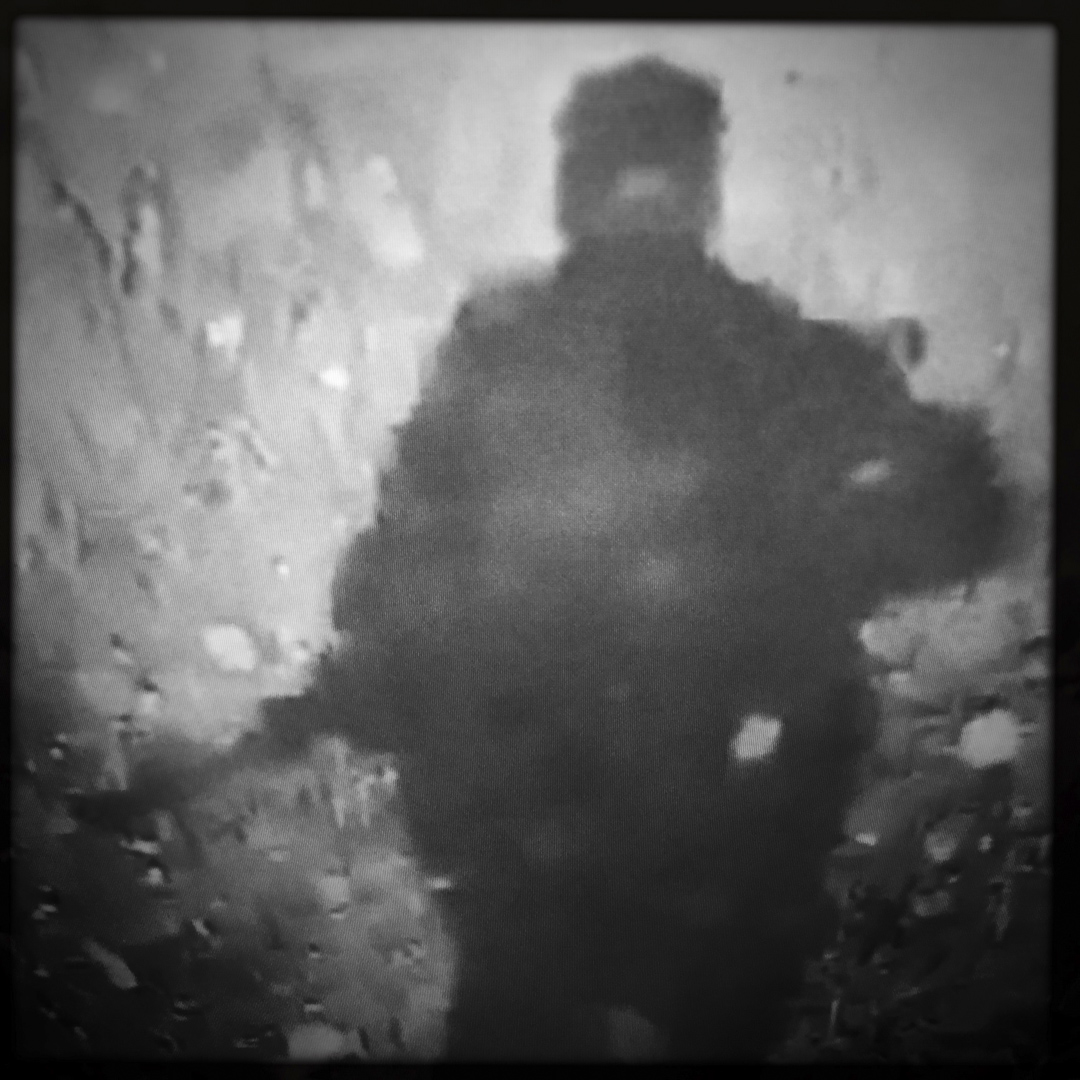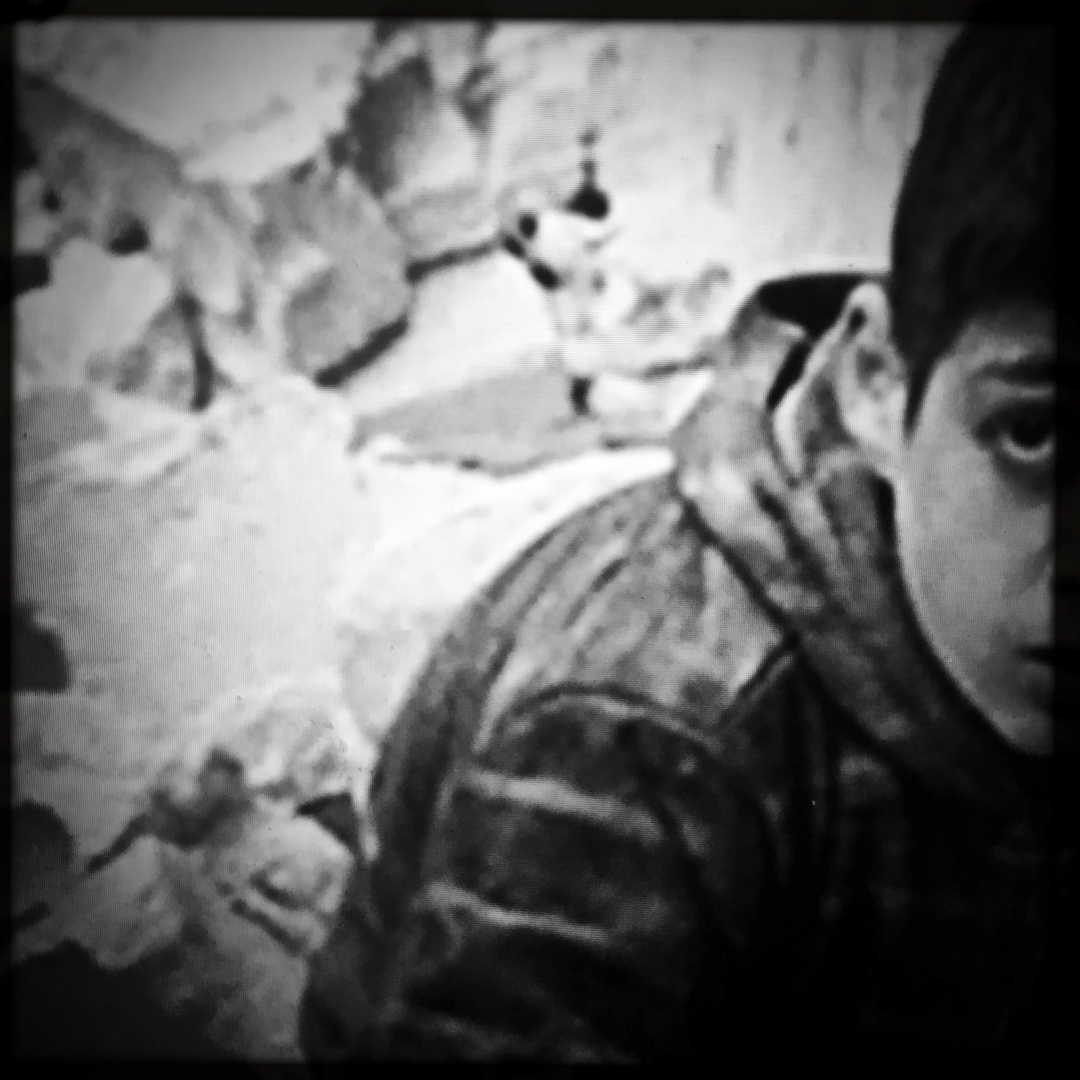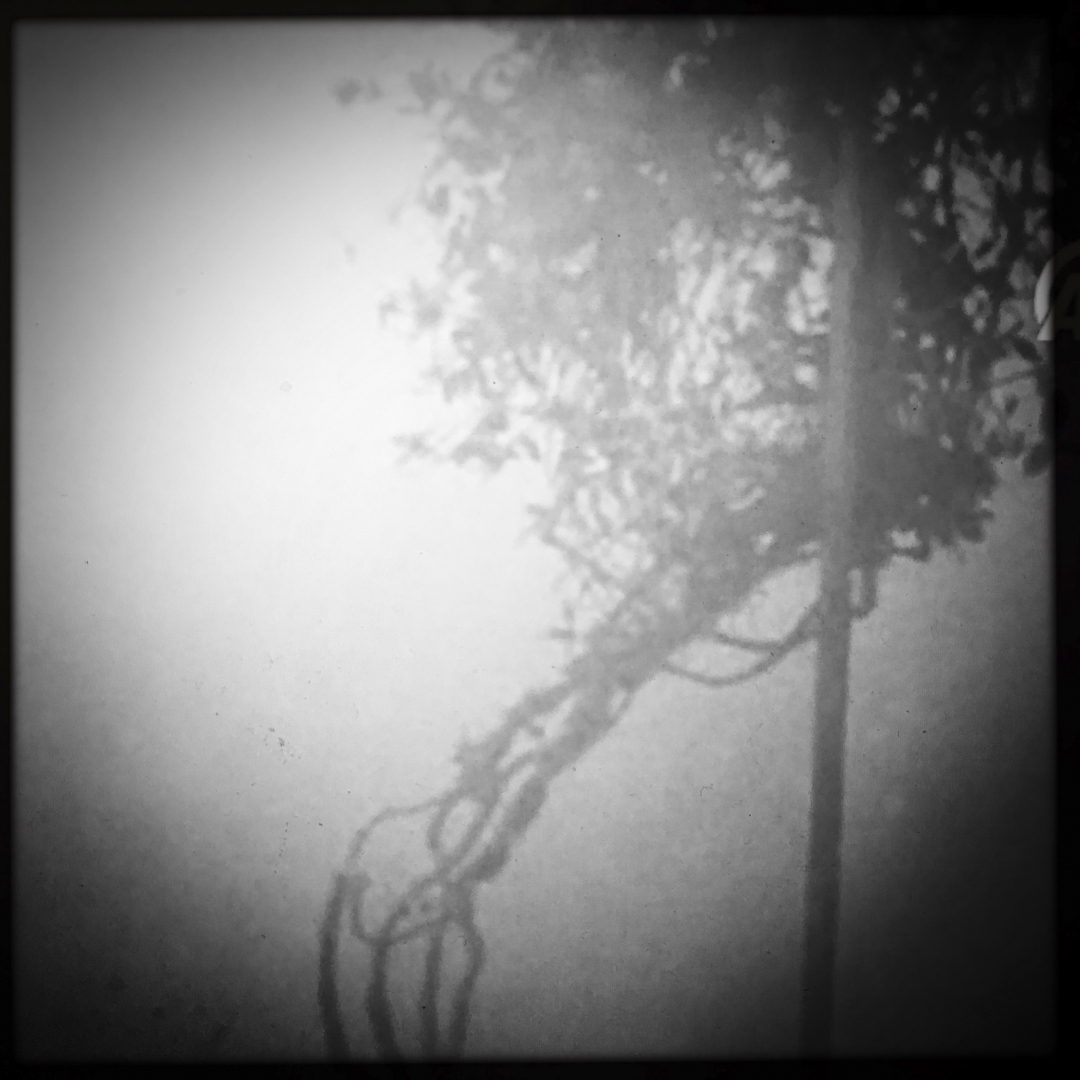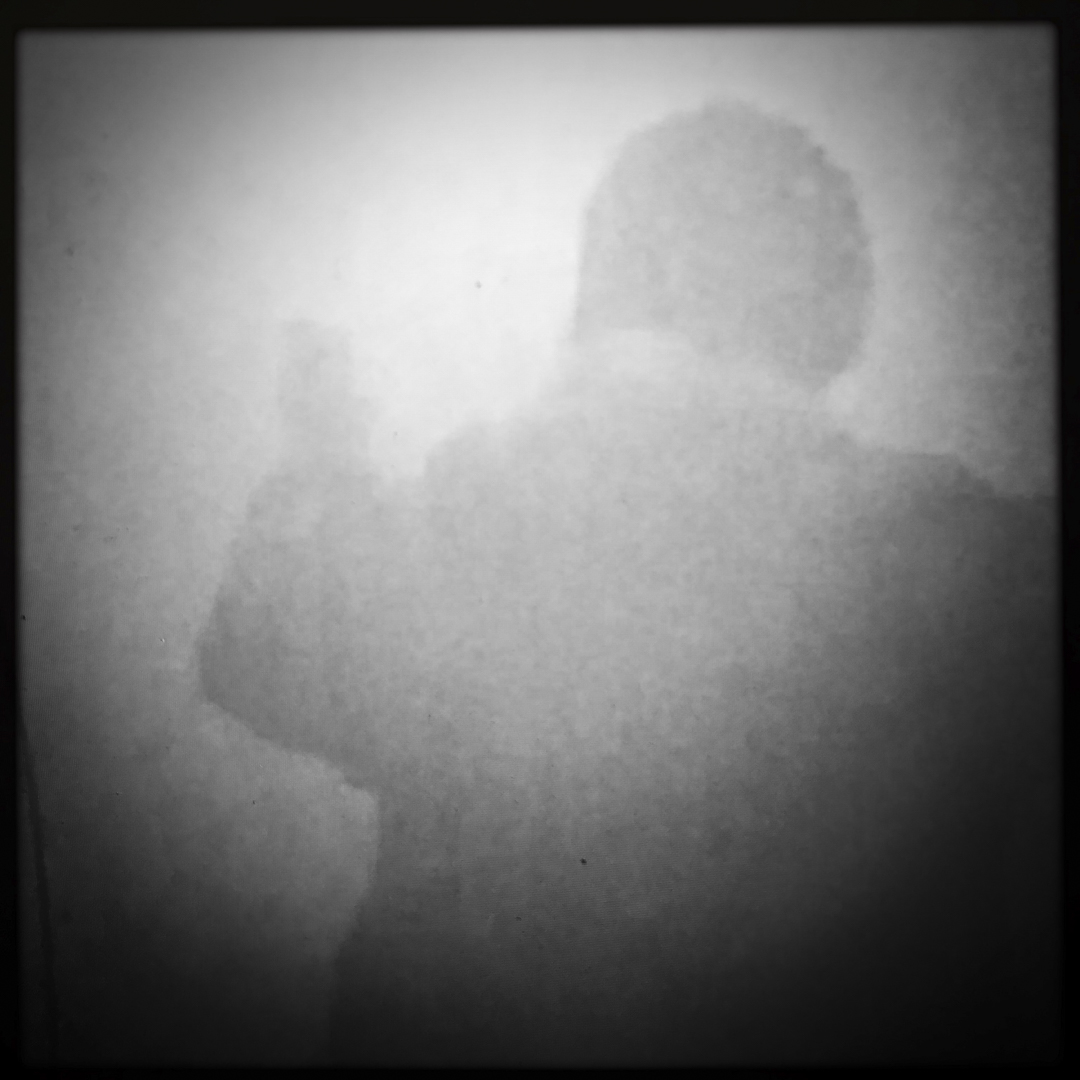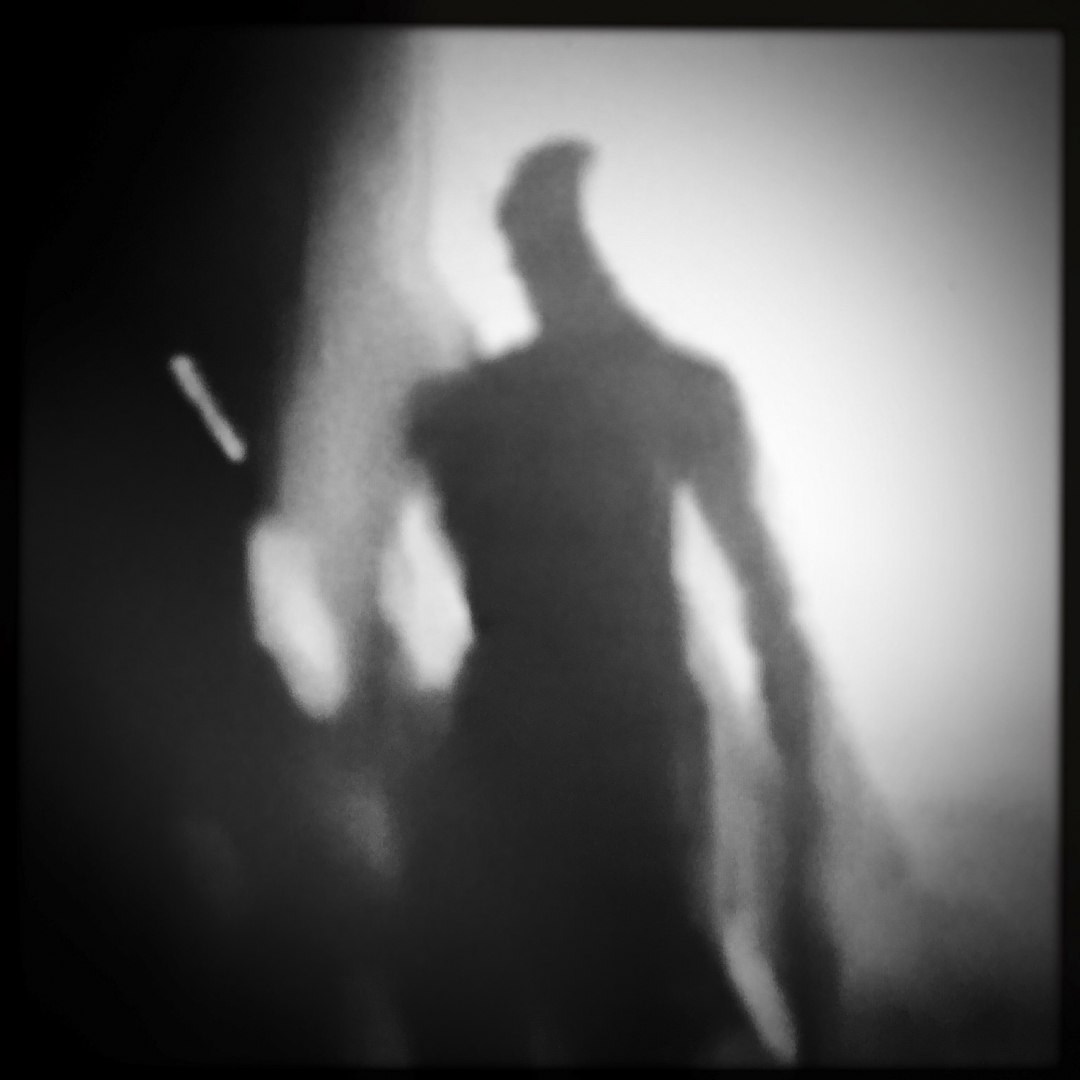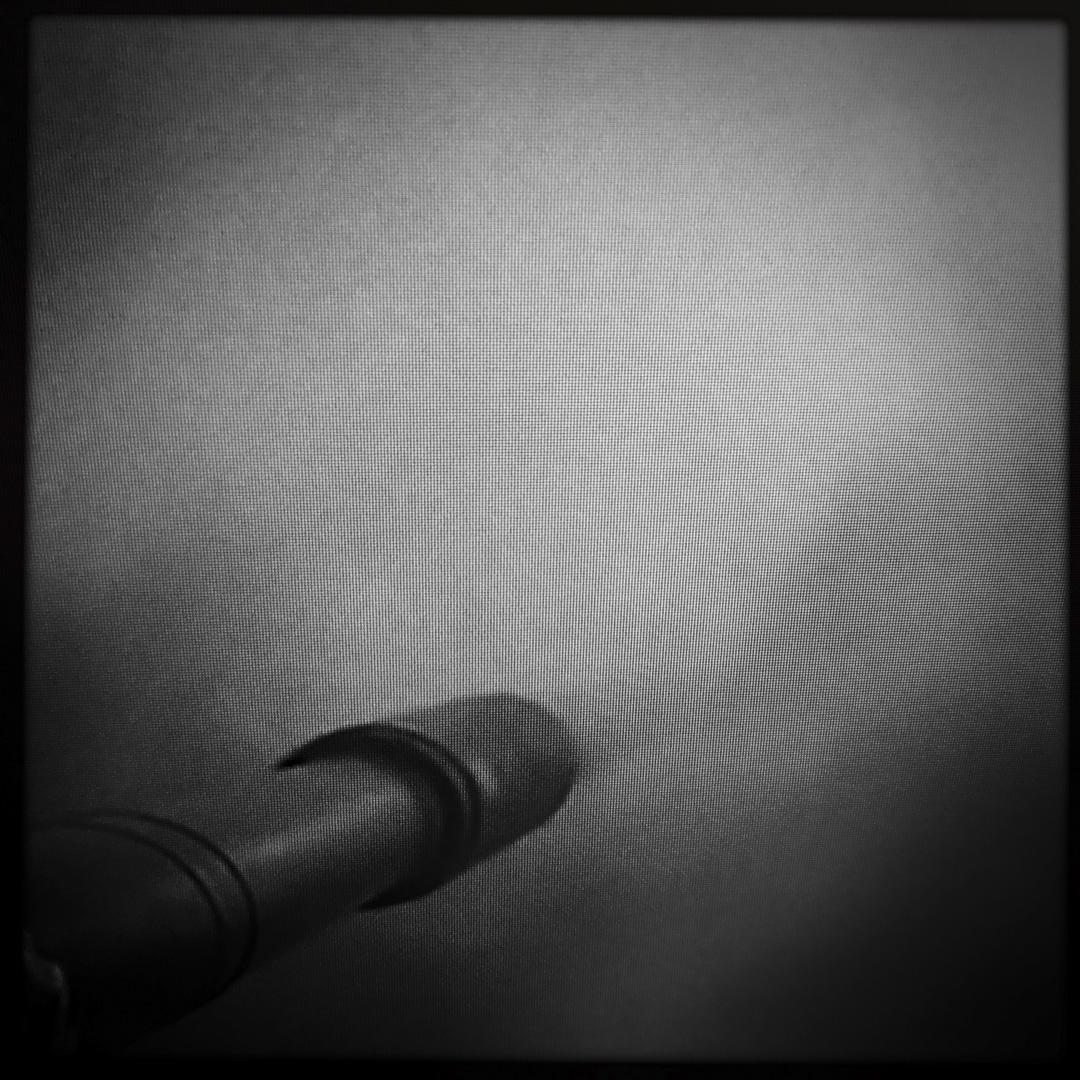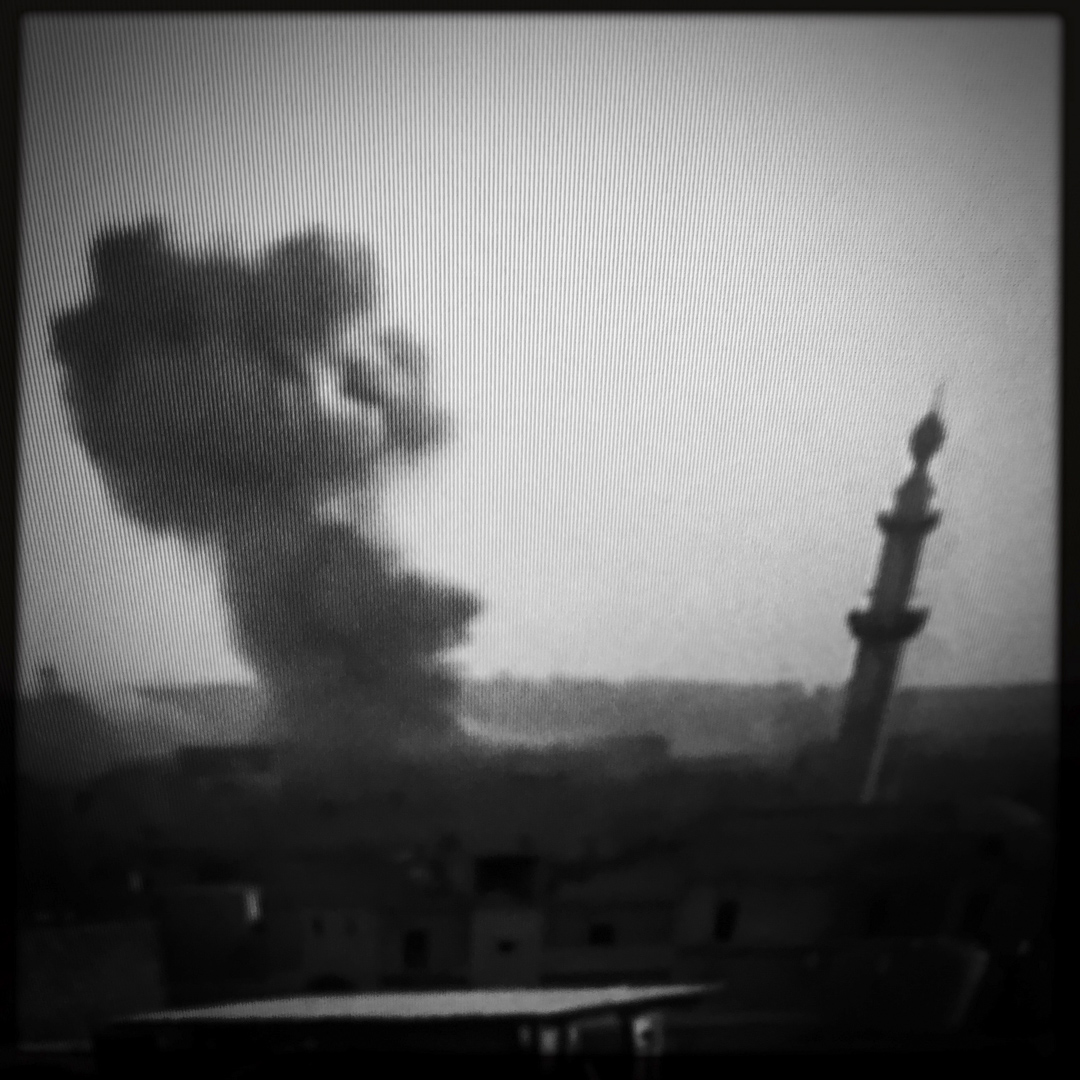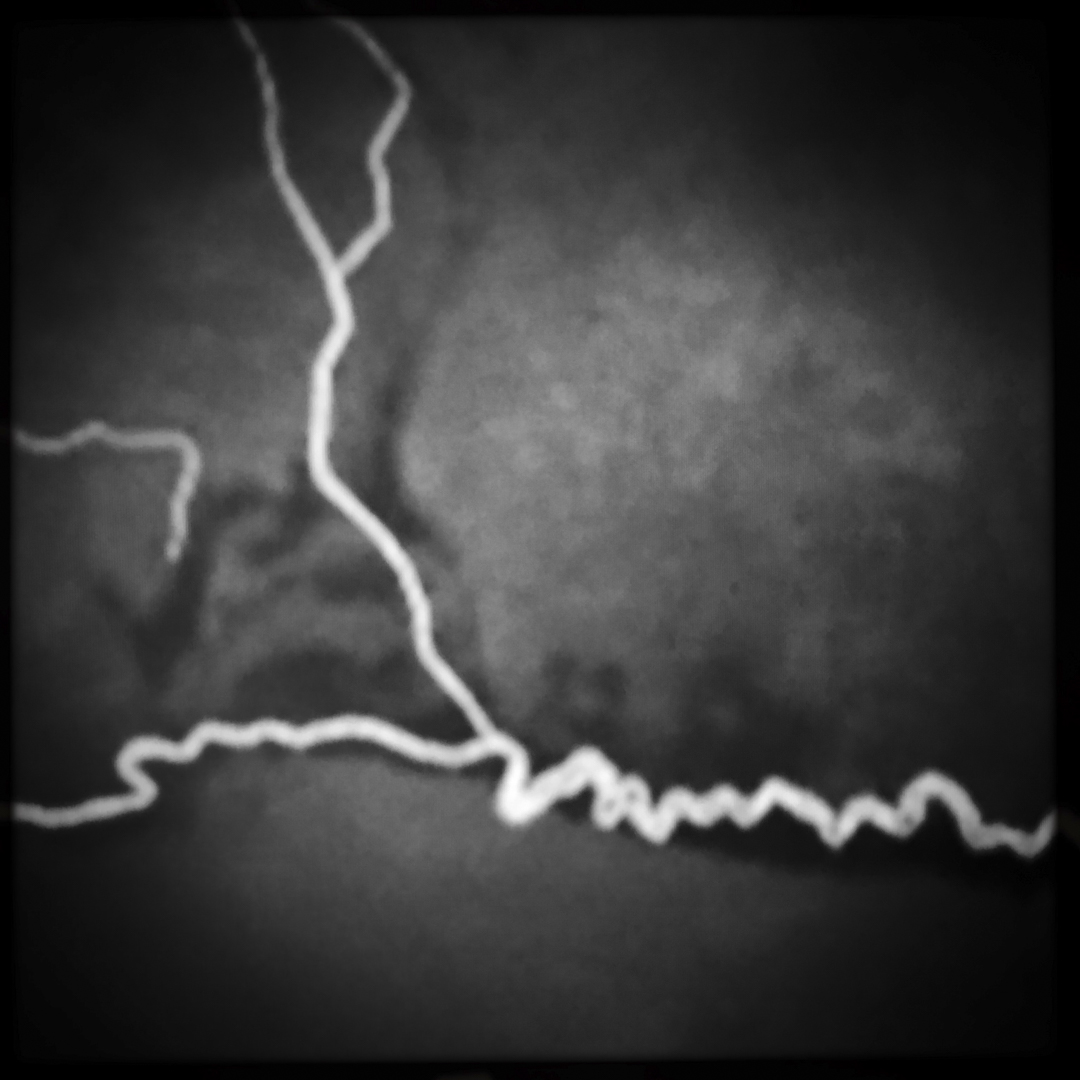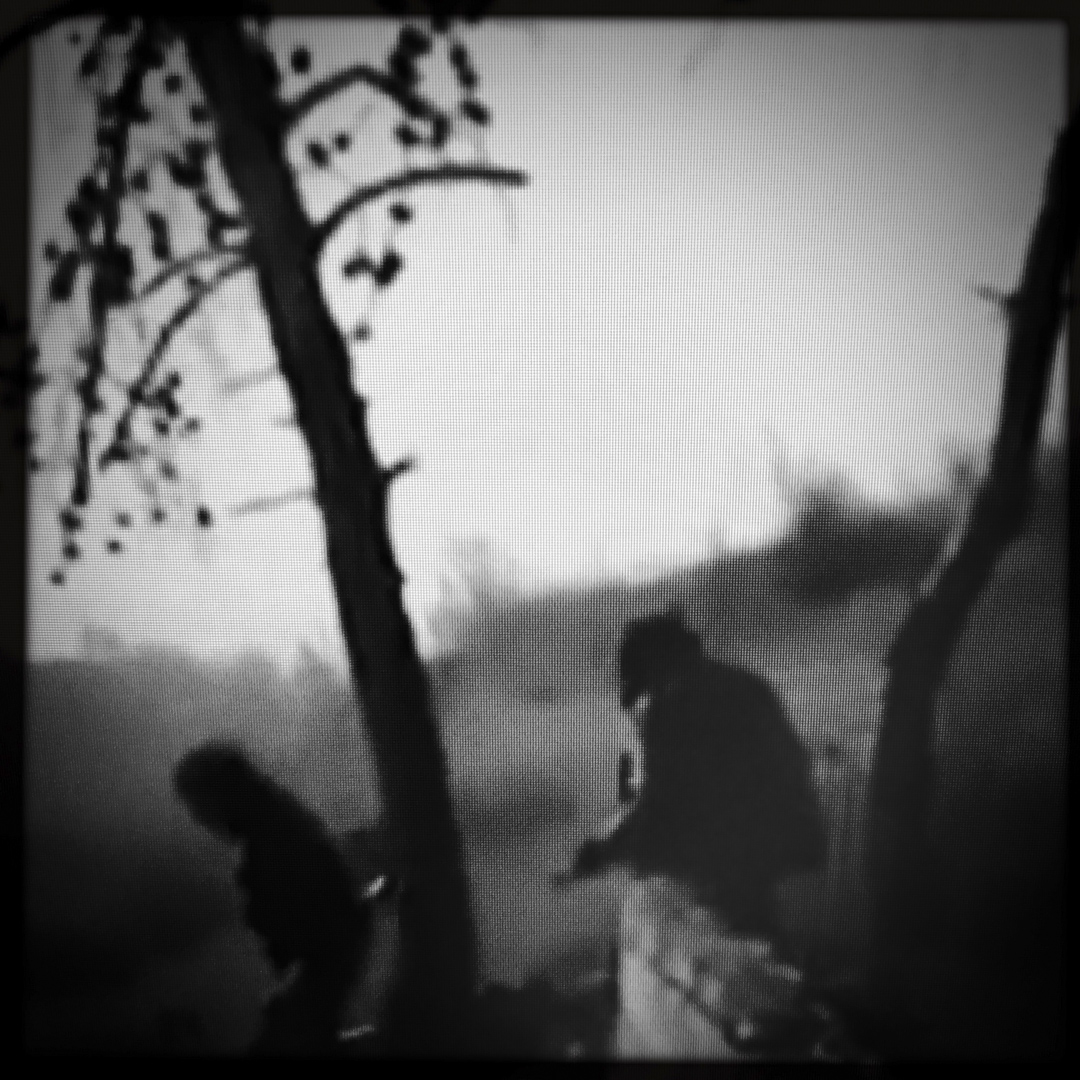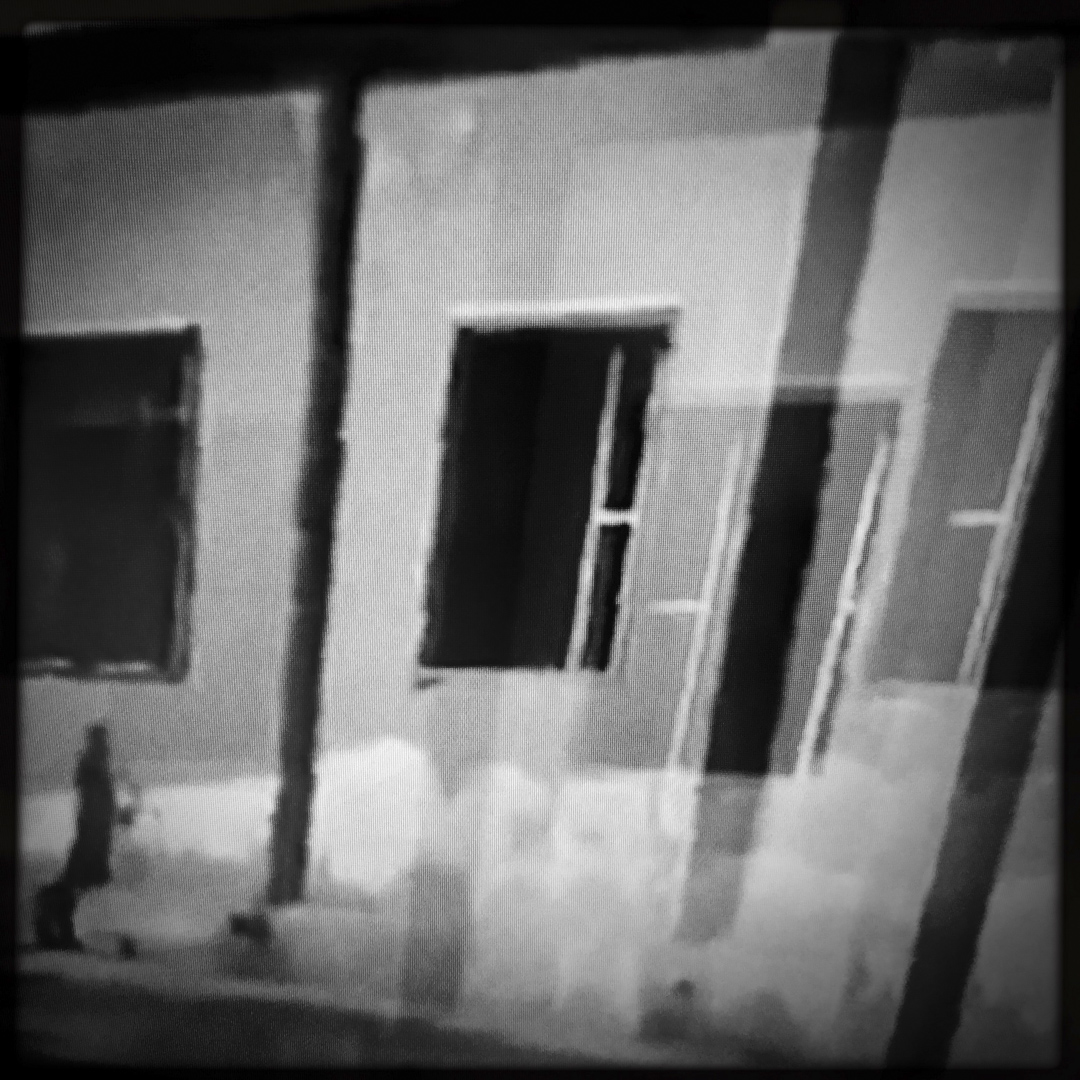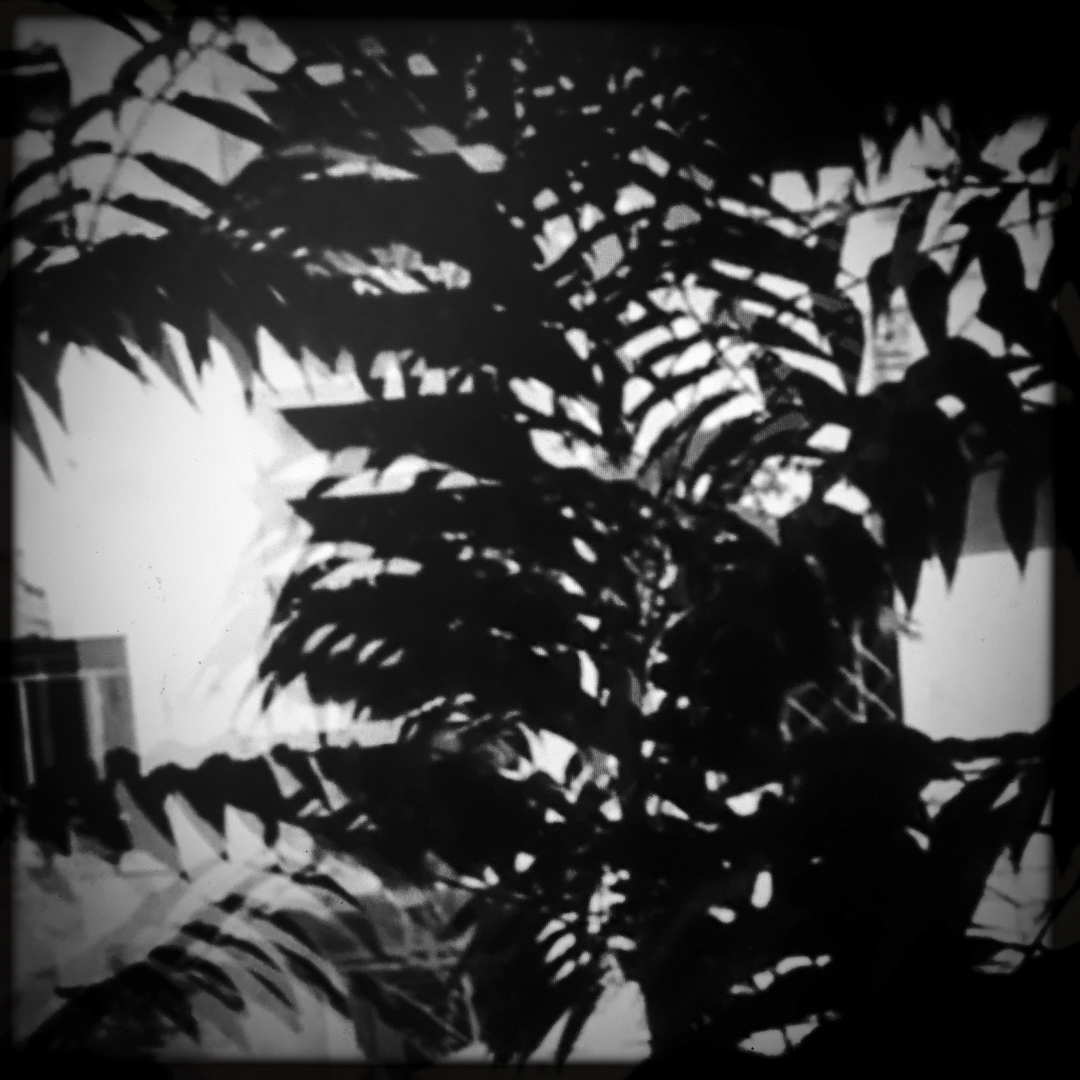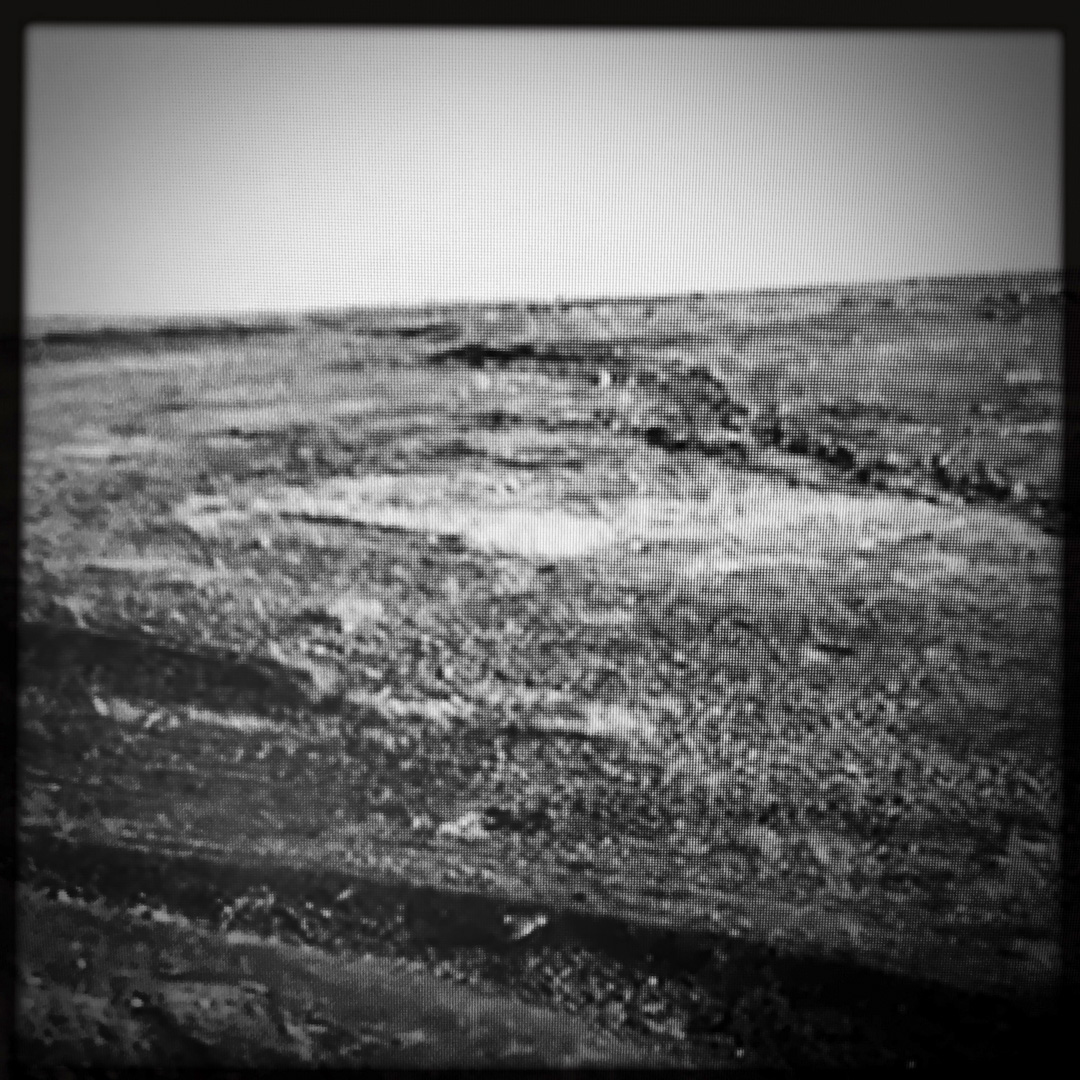The Fall, 2017
When I contacted Elizondo to find out more about The Fall, she wrote back to me from Mexico City: “I’m very far from Syria and I’m trying to understand that cruelly absurd war. … I watch from a distance, completely powerless, through the unreal, numbing filters of video, television, cameras with an imposed distance that never tells what there really is.”
War, she explained when we finally met in Paris, has always been an “obsession”, even though, paradoxically, she’s only known it through film, television, and family memories. Last January, after weeks of thinking about the Battle of Aleppo and the accompanying media “spectacle” she’d witnessed, the project that became The Fall got underway with a one-day session of YouTube screen saves made with her iPhone and the photography app Hipstamatic. A small selection of images from that vast corpus— all saved in Hipstamatic’s “retro” blackand- white, square format—were then meticulously reframed, reworked, laid out individually or in groups, and sequenced into sixty pages, five months’ work in all. And a dummy so subtle in its visual effects that Escourbiac, the printer she contacted with the idea of making a small digital edition on newsprint, convinced her to switch to offset and a creamy uncoated paper that imposes yet another kind of distance from the fleeting experience of print and electronic media.
The result is an open-ended visual narrative that draws us into the precarious balancing act between what John Berger so aptly called “what we see and what we know”. Just as the grid-like patterns of the screen saves preclude the voyeurism of the media, the traces of the violence behind those same screens preclude any aesthetic appropriation. Elizondo shows us what we see (and tells what there really is, what we don’t see), not “over there”, under the bombs, but “over here”, inside the international community that let Aleppo fall.
– Miriam Rosen
